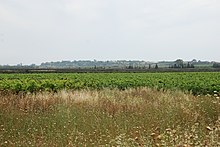
Back سنة سبتية (اليهودية) Arabic Sabatický rok Czech Sabbatår Danish Schmitajahr German Σεμιτάχ Greek شمیتا Persian Shmita Finnish Chemitta French שמיטה HE Tahun Sabat ID
You can help expand this article with text translated from the corresponding article in Hebrew. Click [show] for important translation instructions.
|
 | |
| Halakhic texts relating to this article | |
|---|---|
| Torah: | Exodus 23:10–11, Leviticus 25:2–7 Leviticus 25:20–22 and Deuteronomy 15:1–3. |
| Mishnah: | Shevi'it (tractate) |
| Jerusalem Talmud: | Shevi'it (tractate) |

The sabbath year (shmita; Hebrew: שמיטה, literally "release"), also called the sabbatical year or shǝvi'it (שביעית, literally "seventh"), or "Sabbath of The Land", is the seventh year of the seven-year agricultural cycle mandated by the Torah in the Land of Israel and is observed in Judaism.[1]
During shmita, the land is left to lie fallow and all agricultural activity, including plowing, planting, pruning and harvesting, is forbidden by halakha (Jewish law). Other cultivation techniques (such as watering, fertilizing, weeding, spraying, trimming and mowing) may be performed as a preventive measure only, not to improve the growth of trees or other plants. Additionally, any fruits or herbs which grow of their own accord and where no watch is kept over them are deemed hefker (ownerless) and may be picked by anyone.[2] A variety of laws also apply to the sale, consumption and disposal of shmita produce. All debts, except those of foreigners, were to be remitted.[3]
Chapter 25 of the Book of Leviticus promises bountiful harvests to those who observe the shmita, and describes its observance as a test of religious faith.
The most recent shmita year was 2021–2022 or Anno mundi 5782 in the Hebrew calendar. The next shmita cycle will be in 2028-2029, year 5789 in the Hebrew calendar.
- ^ This article incorporates text from Easton's Bible Dictionary (1897), a publication now in the public domain. Sabbatical year—every seventh year, during which the land, according to the law of Moses, had to remain uncultivated (Lev. 25:2–7; comp. Ex. 23:10, 11, 12; Lev. 26:34, 35).
- ^ Mishnah Shevi'it 9:1
- ^ Deut 15:1–11